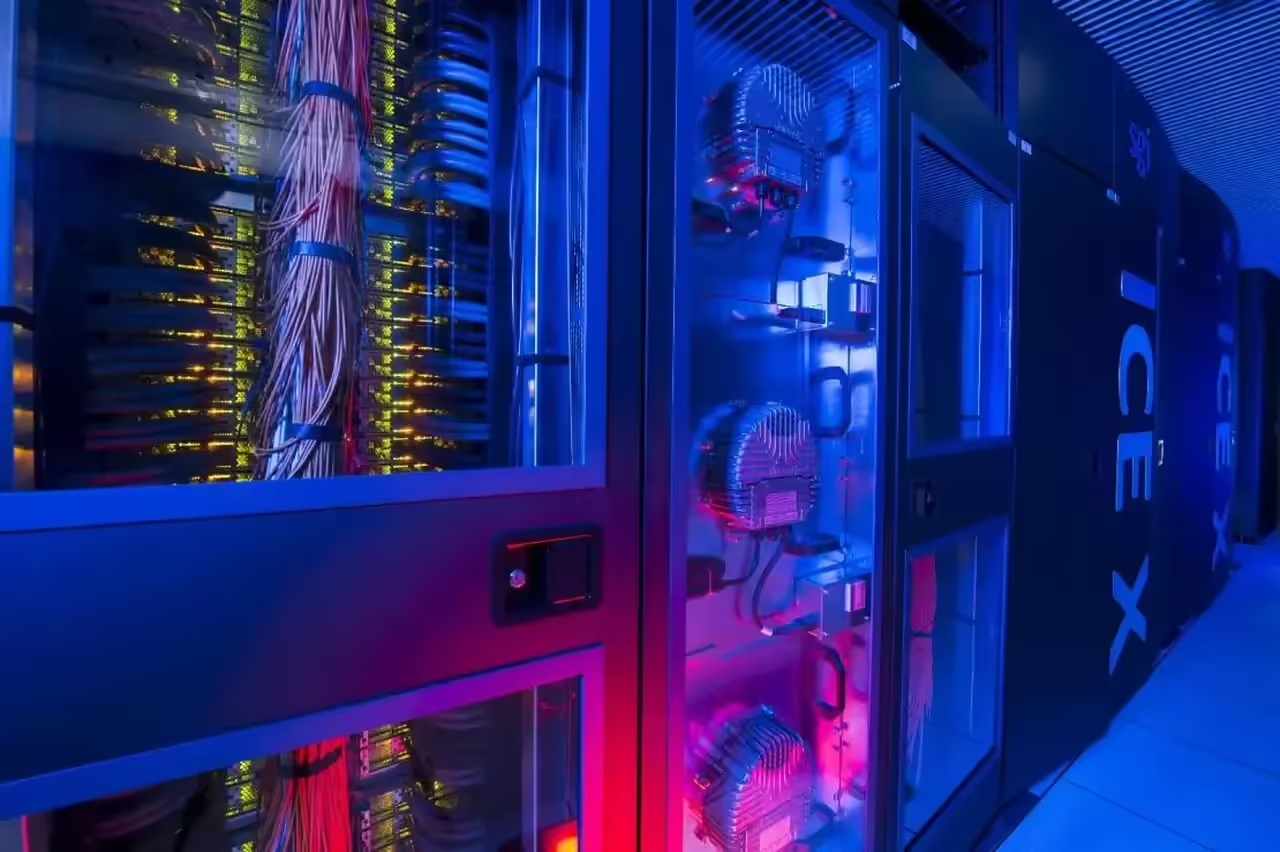
In the ever-evolving landscape of technology, one entity continually stands at the pinnacle of computing prowess – the world’s most advanced computer. These computational powerhouses are marvels of engineering, capable of solving complex problems, conducting groundbreaking research, and advancing our understanding of the universe. In this article, we will embark on a journey to explore the ins and outs of the most advanced computer in the world.
Defining the Supercomputer
The term “supercomputer” is used to describe a class of computers that surpass the capabilities of typical personal computers or even high-end servers. Supercomputers are designed to tackle the most challenging computational tasks, from simulating climate models and predicting weather patterns to unraveling the mysteries of the cosmos and conducting nuclear simulations.
Historical Evolution
The history of supercomputing is a fascinating one, marked by constant innovation and a race to achieve unprecedented computational power. The roots of supercomputing can be traced back to the mid-20th century, but it wasn’t until the 1960s and 1970s that these machines truly gained prominence. Early supercomputers, like the CDC 6600 and Cray-1, were characterized by their immense size, power consumption, and custom-built architectures.
Key Characteristics
The most advanced computer in the world typically exhibits several key characteristics:
Massive Processing Power: Supercomputers boast an extraordinary number of processors, enabling them to perform trillions of calculations per second.
Specialized Architecture: These computers often utilize highly customized architectures tailored to specific types of calculations.
Parallel Processing: Supercomputers excel at parallel processing, allowing them to divide complex tasks into smaller, manageable parts.
Sophisticated Cooling Systems: To manage the immense heat generated by their operations, supercomputers rely on advanced cooling solutions.
Practical Applications
Supercomputers play a pivotal role in various fields, including:
Scientific Research: From simulating the behavior of subatomic particles to modeling climate change, supercomputers empower scientists to make significant breakthroughs.
Astronomy and Astrophysics: These computers enable astronomers to process massive data sets and simulate cosmic phenomena.
Biomedical Research: Supercomputers accelerate drug discovery, protein folding, and disease modeling.
National Security: Governments employ supercomputers for national security purposes, including cryptography and nuclear simulations.
Weather Forecasting: Supercomputers contribute to more accurate and timely weather predictions, saving lives and resources.
The Future of Supercomputing
As technology continues to advance, the future of supercomputing promises even more incredible capabilities. Quantum computing, in particular, has the potential to revolutionize the field, offering solutions to problems that were previously deemed unsolvable.
The Pinnacle of Information Technology: What Is the World’s Most Advanced Computer?
In the ever-accelerating realm of technology, the pursuit of computational supremacy reaches its zenith with the world’s most advanced computer. These extraordinary machines represent the epitome of computing innovation, pushing the boundaries of what was once thought possible.
Defining the Supercomputer
The term “supercomputer” doesn’t merely hint at advanced computing; it exemplifies it. Supercomputers are a unique breed of machines designed to execute exceptionally complex and resource-intensive tasks, often surpassing the capabilities of conventional computers or servers. They are the Olympians of the computing world, engineered for the most intricate calculations and simulations.
A Historical Odyssey
The history of supercomputing is a compelling narrative marked by an unending quest for greater processing power. While the origins of these machines can be traced back to the mid-20th century, their true ascendancy came in the 1960s and 1970s. Early supercomputers, such as the CDC 6600 and the iconic Cray-1, boasted custom architectures, massive physical footprints, and prodigious power consumption.
Distinguishing Features
The world’s most advanced computer typically possesses several distinguishing characteristics:
Astounding Computational Capacity: These supercomputers deliver unparalleled processing power, often performing trillions of calculations per second.
Bespoke Architectures: Supercomputers frequently employ specialized architectures tailored to the unique requirements of complex calculations.
Parallel Processing Mastery: These machines excel at dividing intricate tasks into smaller, parallel operations, drastically reducing computation times.
Advanced Cooling Systems: Given their exceptional heat generation, supercomputers rely on sophisticated cooling solutions to maintain optimal performance.
Real-World Applications
Supercomputers find application in a multitude of fields, revolutionizing:
Scientific Research: From simulating quantum phenomena to deciphering the mysteries of climate change, supercomputers are a driving force behind scientific breakthroughs.
Astronomy and Astrophysics: The ability to process colossal datasets and simulate cosmic events opens new frontiers in our understanding of the universe.
Biomedical Research: Supercomputers accelerate drug discovery, enable protein folding predictions, and provide invaluable insights into disease modeling.
National Security: Governments utilize supercomputers for cryptography, secure communications, and nuclear simulations.
Meteorology: Weather forecasts have improved significantly due to the computational might of supercomputers, enhancing disaster preparedness and resource management.
The Future Awaits
As we advance into the future, the horizons of supercomputing continue to expand. Quantum computing, with its promise of solving problems previously deemed insurmountable, looms large on the technological horizon, potentially reshaping the field.
Outstanding Features of the World’s Most Advanced Computer
When it comes to the world’s most advanced computer, simply calling it “powerful” falls short. These exceptional machines boast a range of standout features that set them apart from ordinary computers. Let’s delve into the most remarkable qualities that make this supercomputer a true marvel of technology:
Unparalleled Processing Power:
One of the most notable attributes of a supercomputer is its extraordinary processing power, measured in teraflops or petaflops, which means it can perform trillions of operations per second.
Specialized Architecture:
Supercomputers are equipped with highly specialized architectures tailored to specific tasks, ensuring optimal performance for scientific calculations, simulations, data analysis, and more.
Huge Memory Capacity:
To handle massive datasets and complex calculations, supercomputers come with immense RAM capacity, allowing temporary storage of data and intermediate results without causing processing bottlenecks.
Extreme Parallelism:
Supercomputers excel in parallelism, breaking down massive tasks into smaller units that run simultaneously on multiple processor cores, significantly accelerating complex problem-solving.
Advanced Cooling Systems:
Due to the immense heat generated, supercomputers employ cutting-edge cooling systems to maintain safe operating temperatures for efficient and long-lasting performance.
High-Speed Networks:
Fast and efficient communication between components is critical. Supercomputers use high-speed networks to enable rapid data transfer between processors and nodes.
Significant Power Consumption:
Despite their impressive processing capabilities, supercomputers can be notorious for their high power consumption, necessary to maintain optimal performance and cooling.
Designed for Specific Applications:
Supercomputers are often tailored or configured for specific scientific or industrial applications, including climate modeling, nuclear research, material simulation, biomedical research, and more.
Security and Redundancy:
Data security and redundancy measures are critical to ensure data integrity and operational continuity in supercomputers. These systems incorporate safeguards against data breaches and hardware failures.
Significant Contributions:
Supercomputers have played a pivotal role in solving complex problems and have contributed to significant scientific advancements, from theoretical physics to biomedical research. They have enabled high-fidelity simulations and data analyses on a scale that was previously unimaginable.
The Role of Quantum Computing in the Evolution of Supercomputers
The world of supercomputing is on the brink of a profound transformation, and at the heart of this change lies the emerging field of quantum computing. Quantum computing promises to revolutionize the way we approach complex calculations, presenting new opportunities and challenges for the future of supercomputers.
Quantum Computing Primer:
Quantum computing leverages the principles of quantum mechanics, exploiting the unique properties of quantum bits or qubits. Unlike classical bits, which can be either 0 or 1, qubits can exist in multiple states simultaneously, thanks to a phenomenon known as superposition. This allows quantum computers to explore numerous solutions in parallel, exponentially increasing their processing power for certain tasks.
The Potential of Quantum Supremacy:
Quantum computing has the potential to outperform classical supercomputers in specific problem domains. Tasks that are considered infeasible for even the most advanced supercomputers today, such as simulating complex quantum systems, optimizing large-scale logistics, and breaking modern encryption methods, may become solvable with quantum computers.
Complementary Roles:
Quantum computing and classical supercomputing are not mutually exclusive; they are complementary. Quantum computers are best suited for specific problems that benefit from their unique abilities, while classical supercomputers continue to excel in a wide range of tasks.
Quantum and Classical Synergy:
The synergy between quantum and classical computing opens the door to a new paradigm known as hybrid quantum-classical computing. In this model, quantum computers can tackle specialized parts of a problem, offloading complex calculations from classical supercomputers. The results from the quantum portion of the computation can then be integrated into the classical algorithm.
Challenges and Hurdles:
Despite their promise, quantum computers are still in their infancy. They face challenges related to error correction, stability, scalability, and the need for specialized hardware. Additionally, the field of quantum algorithms is evolving, and new approaches are continually being explored.
The Future of Supercomputers:
As quantum computing matures, we can expect to see a shift in the landscape of supercomputing. Quantum-enhanced algorithms and hybrid approaches will become more prevalent, opening new possibilities in fields like materials science, drug discovery, cryptography, and climate modeling.
Cryptocurrencies and Supercomputers: Exploring the Relationship
In recent years, the world of cryptocurrencies has experienced phenomenal growth, and supercomputers have played a significant role in this surge. The relationship between cryptocurrencies and supercomputers is complex and multifaceted, and in this section, we will examine how these two technologies converge and mutually influence each other.
Cryptocurrency Mining:
Cryptocurrency mining is a resource-intensive process that requires substantial computing power. This is where supercomputers come into play. Miners use supercomputers and high-performance server clusters to solve complex cryptographic algorithms and validate transactions on the blockchain network. The massive processing capability of supercomputers allows miners to compete for cryptocurrency rewards.
Cryptography Simulation and Prediction:
Cryptography is fundamental to the security of cryptocurrencies. To ensure that digital coins are secure, sophisticated cryptographic algorithms are used. Supercomputers are essential for simulating and evaluating these algorithms, helping to discover vulnerabilities and enhance cryptocurrency security.
Blockchain Data Analysis:
Data analysis plays a crucial role in understanding trends and patterns in the world of cryptocurrencies. Supercomputers are ideal for processing and analyzing large blockchain datasets, enabling researchers and analysts to uncover valuable insights about the market, investor behavior, and the evolution of cryptocurrencies.
Blockchain Security:
Supercomputers are also used to audit and ensure the security of blockchain networks. Quantum cryptography, being developed with the assistance of supercomputers, may play a significant role in protecting cryptocurrencies against future threats.
Energy Challenges:
While supercomputers are valuable for cryptocurrency mining, they also present significant energy challenges. The energy intensity of supercomputers can contribute to the carbon footprint of cryptocurrency mining, leading to debates about sustainability and energy efficiency in this space.
Continuous Evolution:
The relationship between cryptocurrencies and supercomputers continues to evolve as both technologies advance. The emergence of more energy-efficient cryptocurrencies, along with innovation in mining and blockchain security, is shaping this ever-changing relationship.







